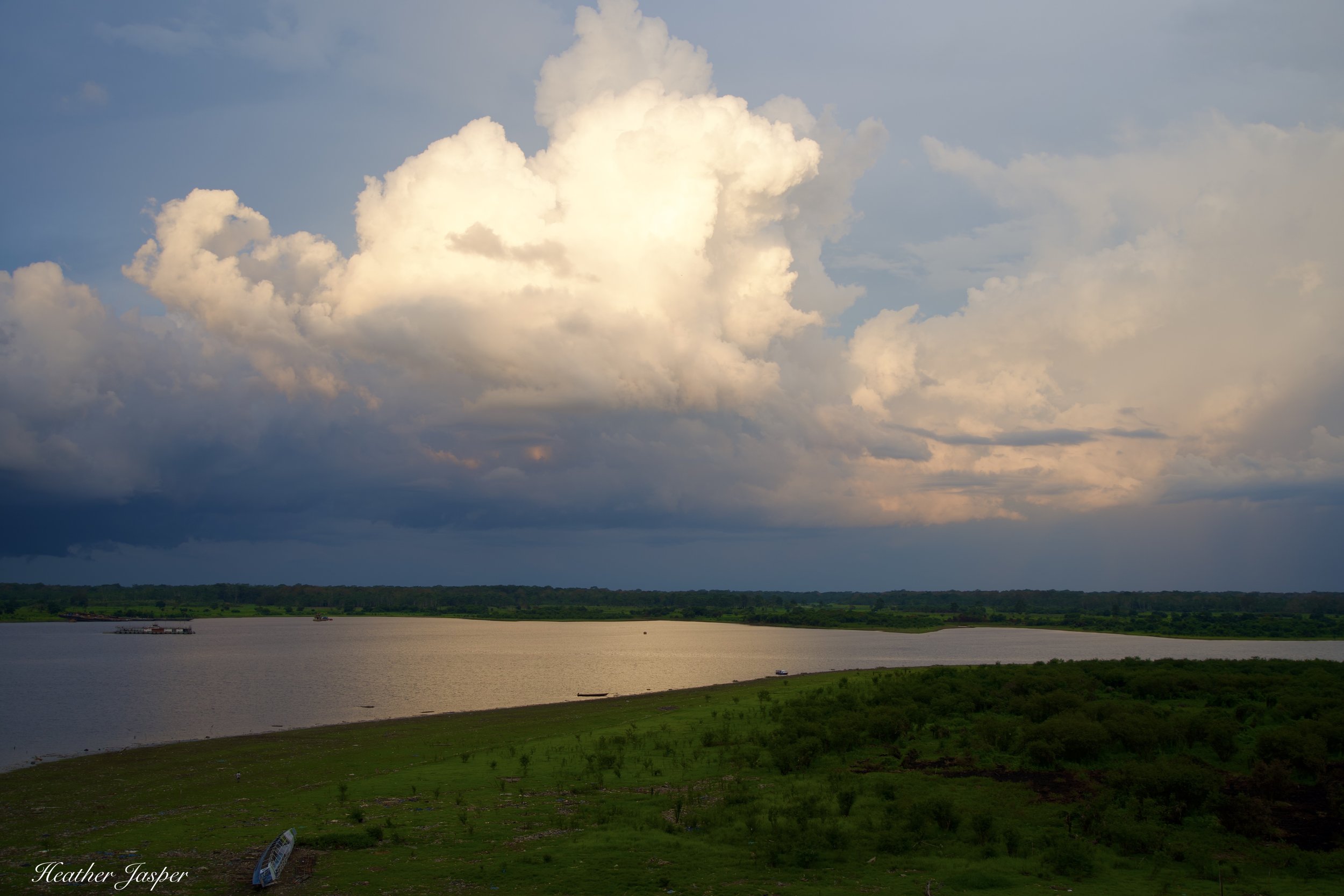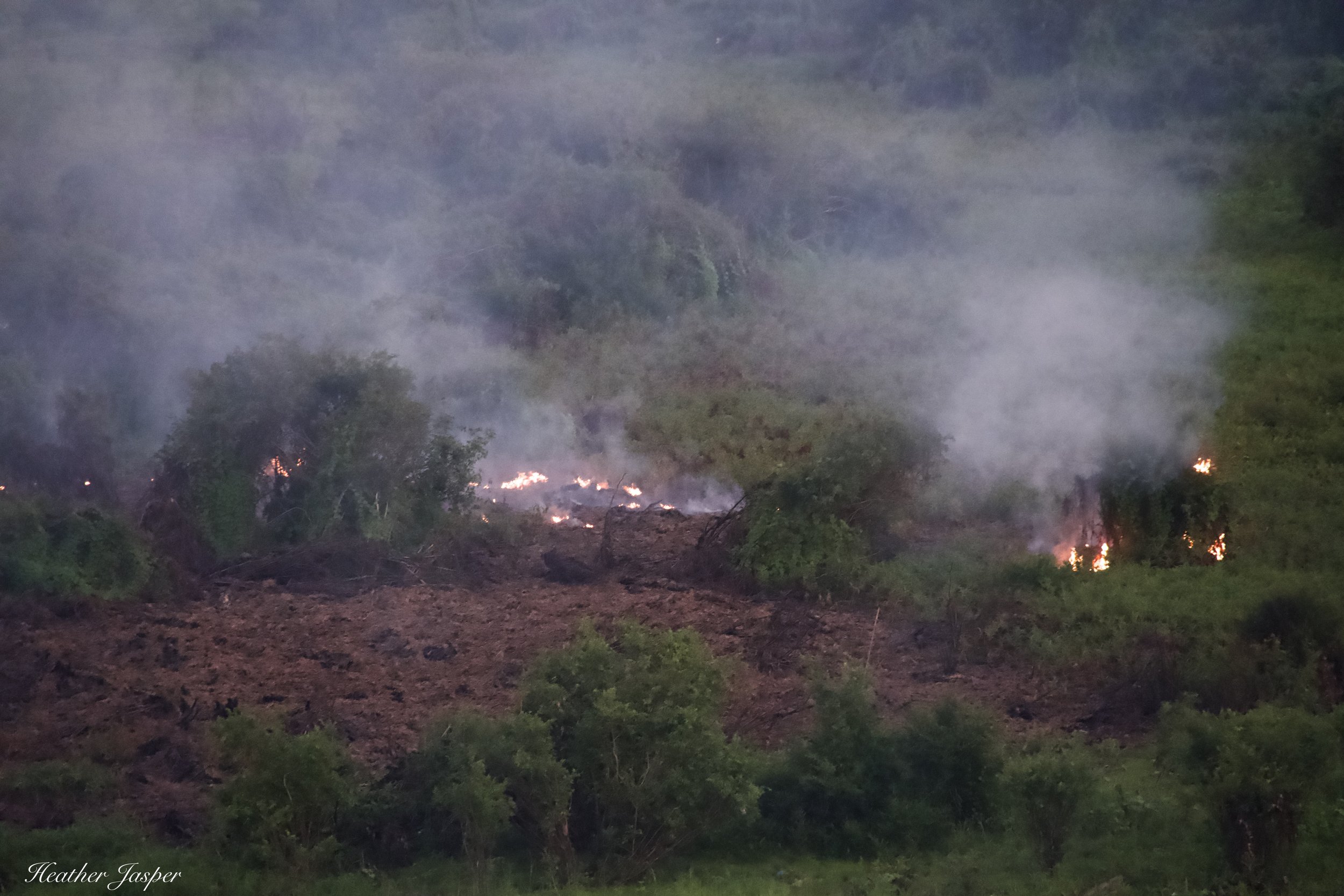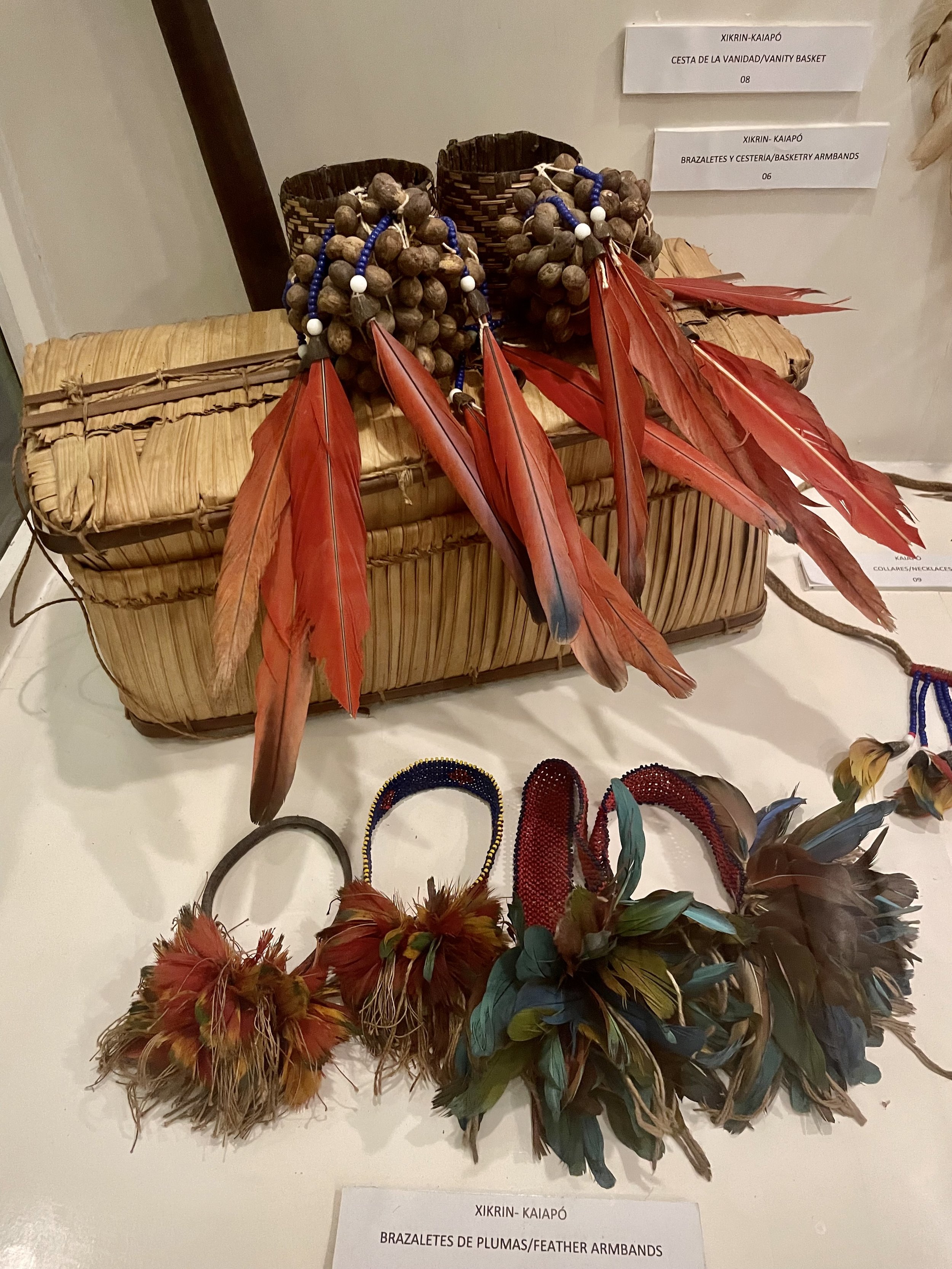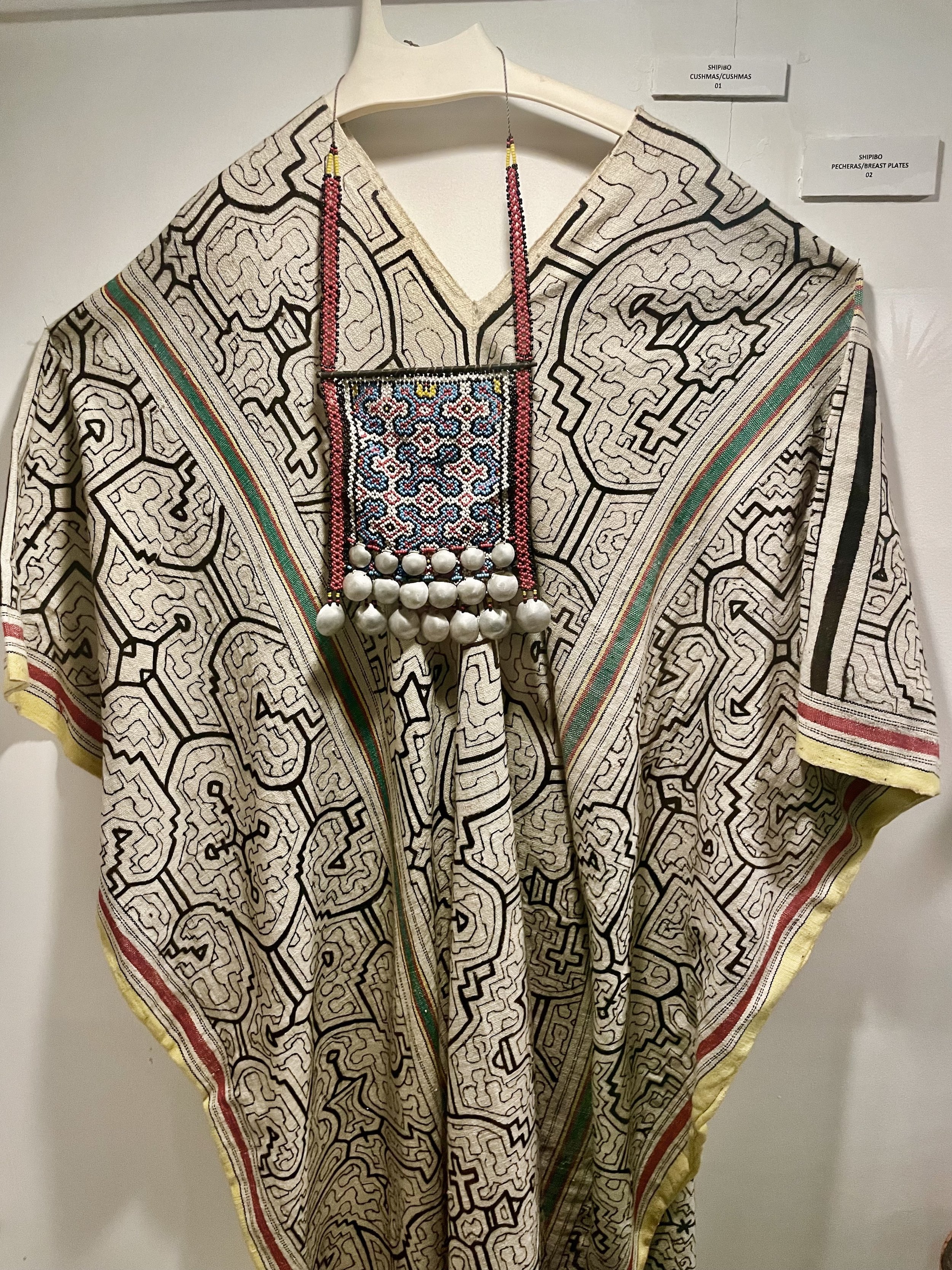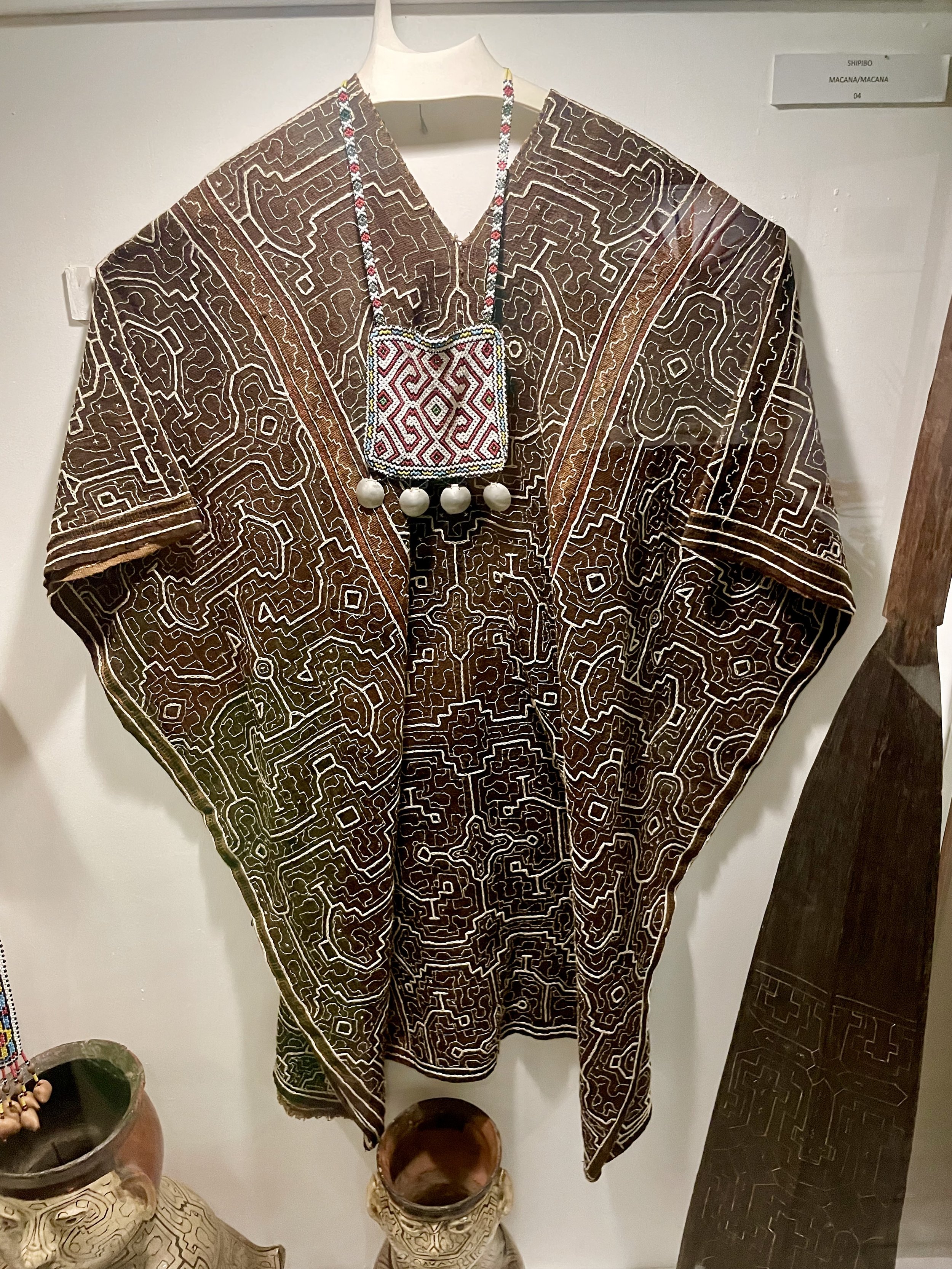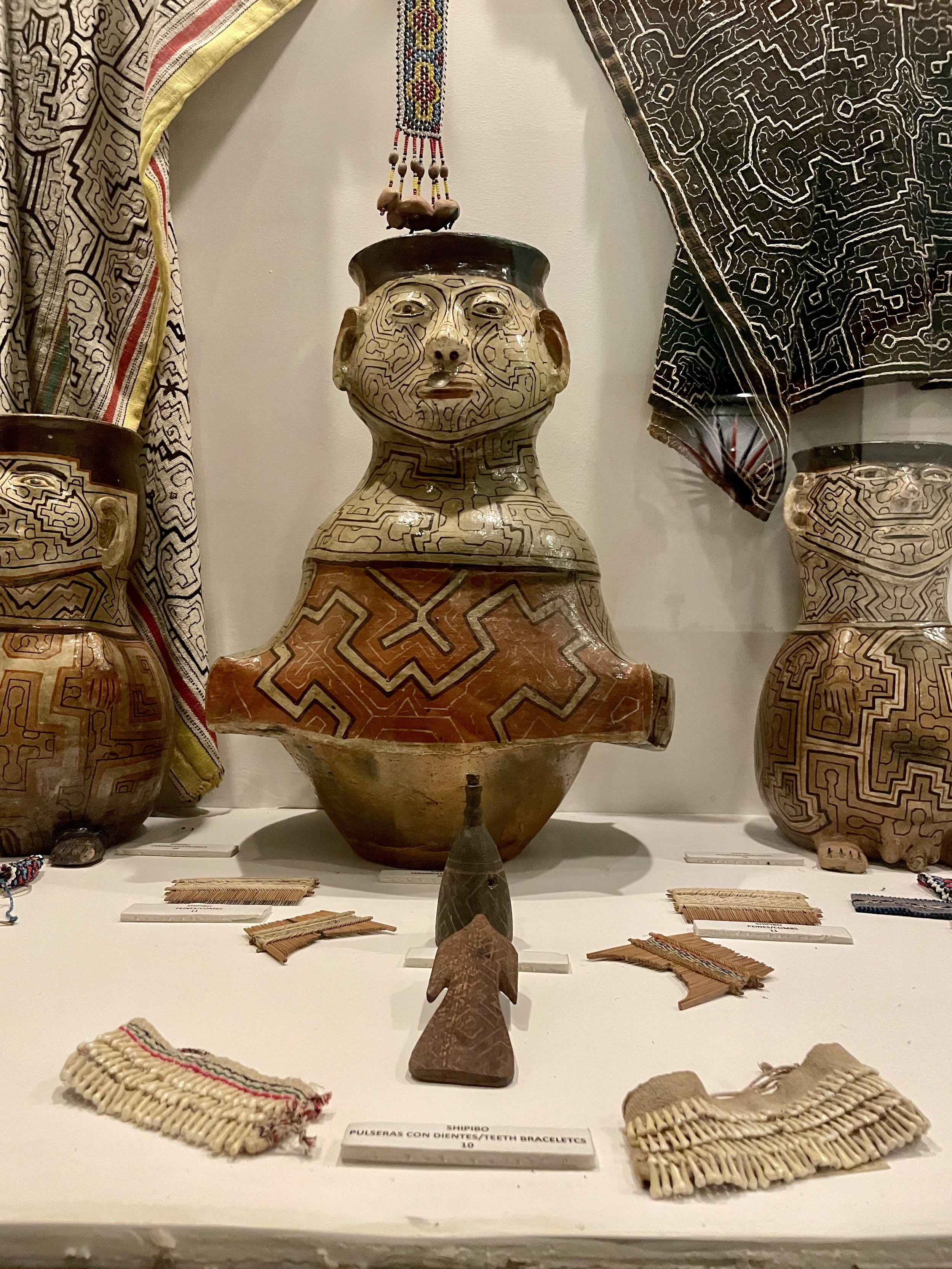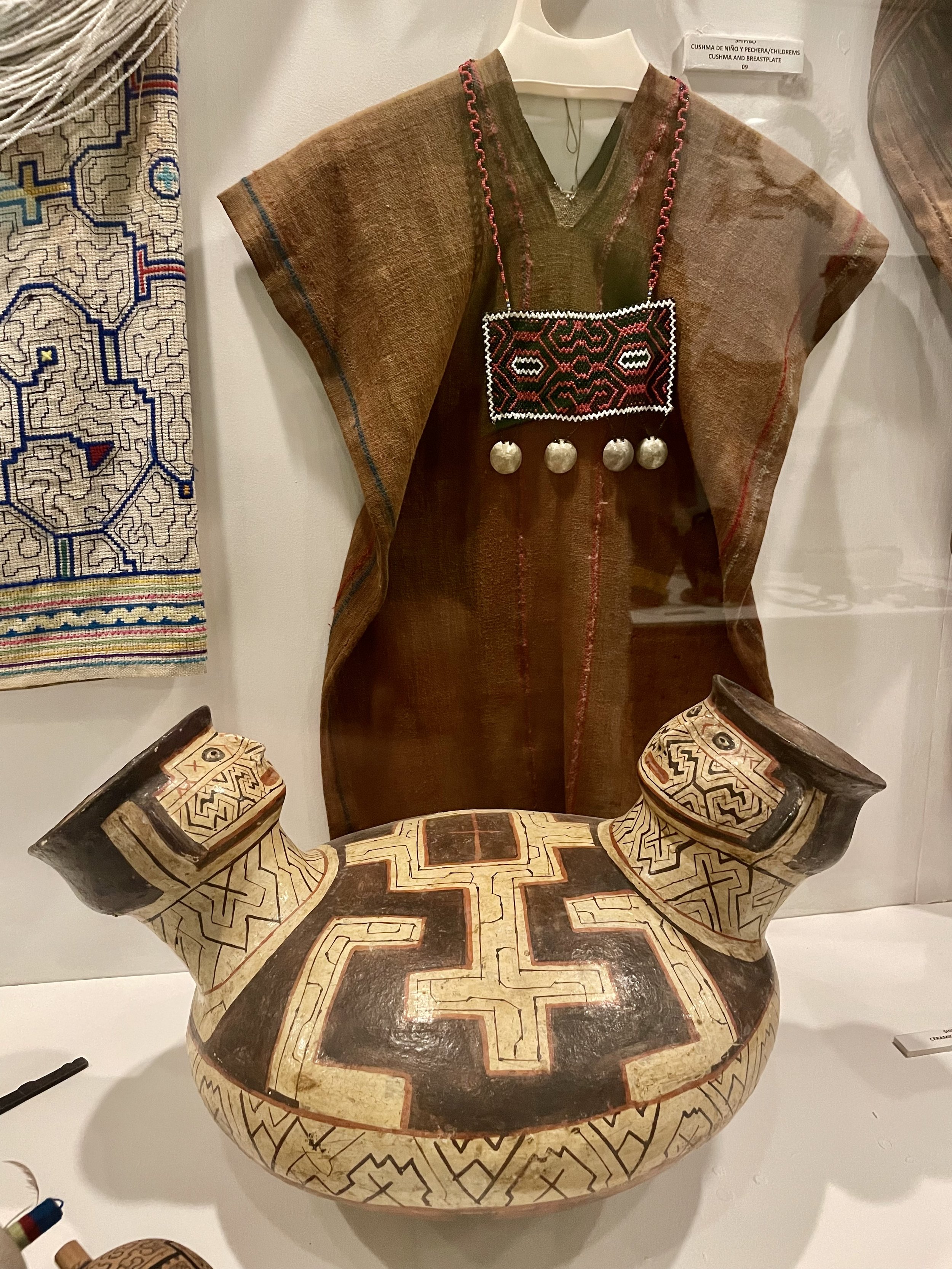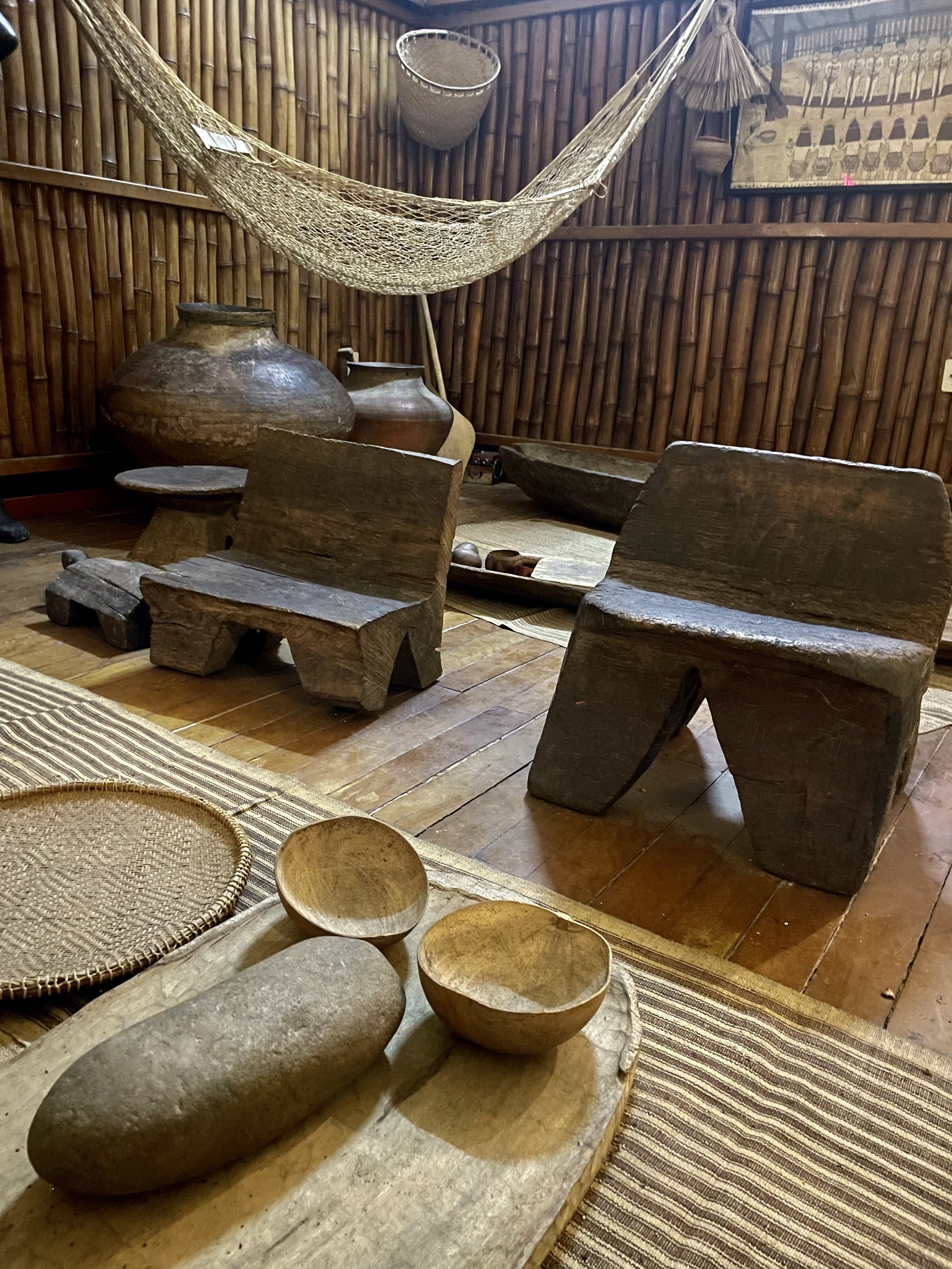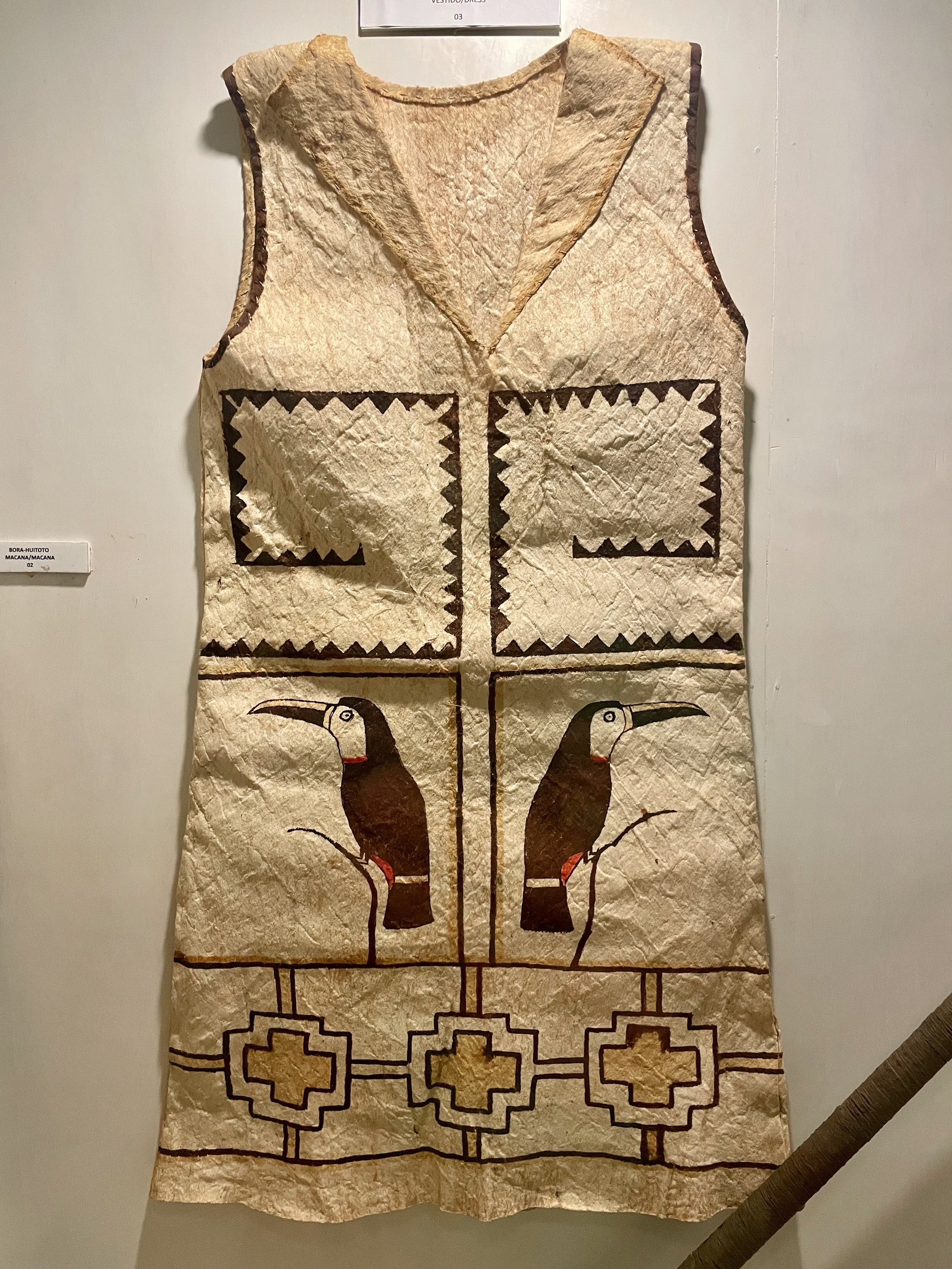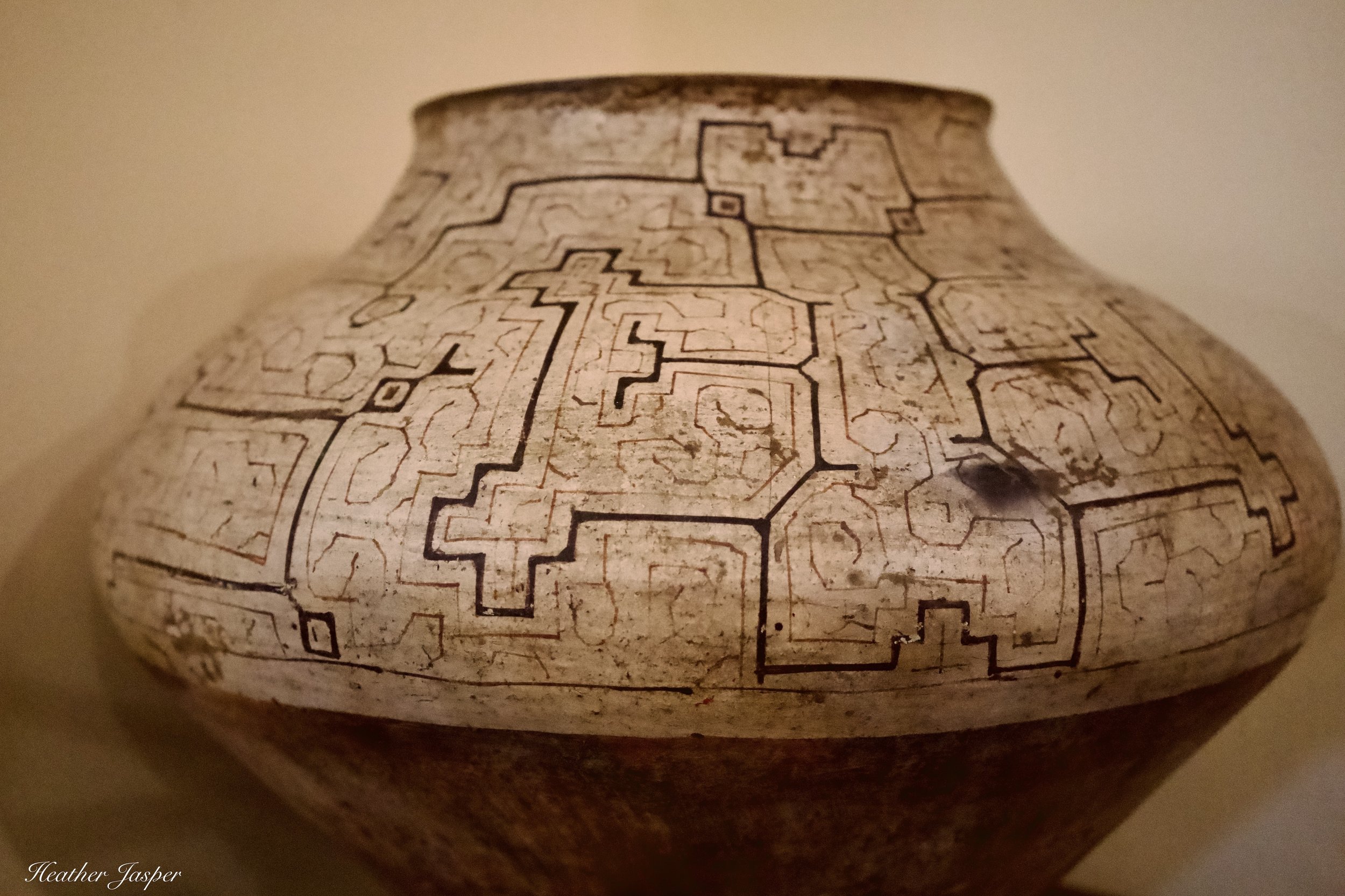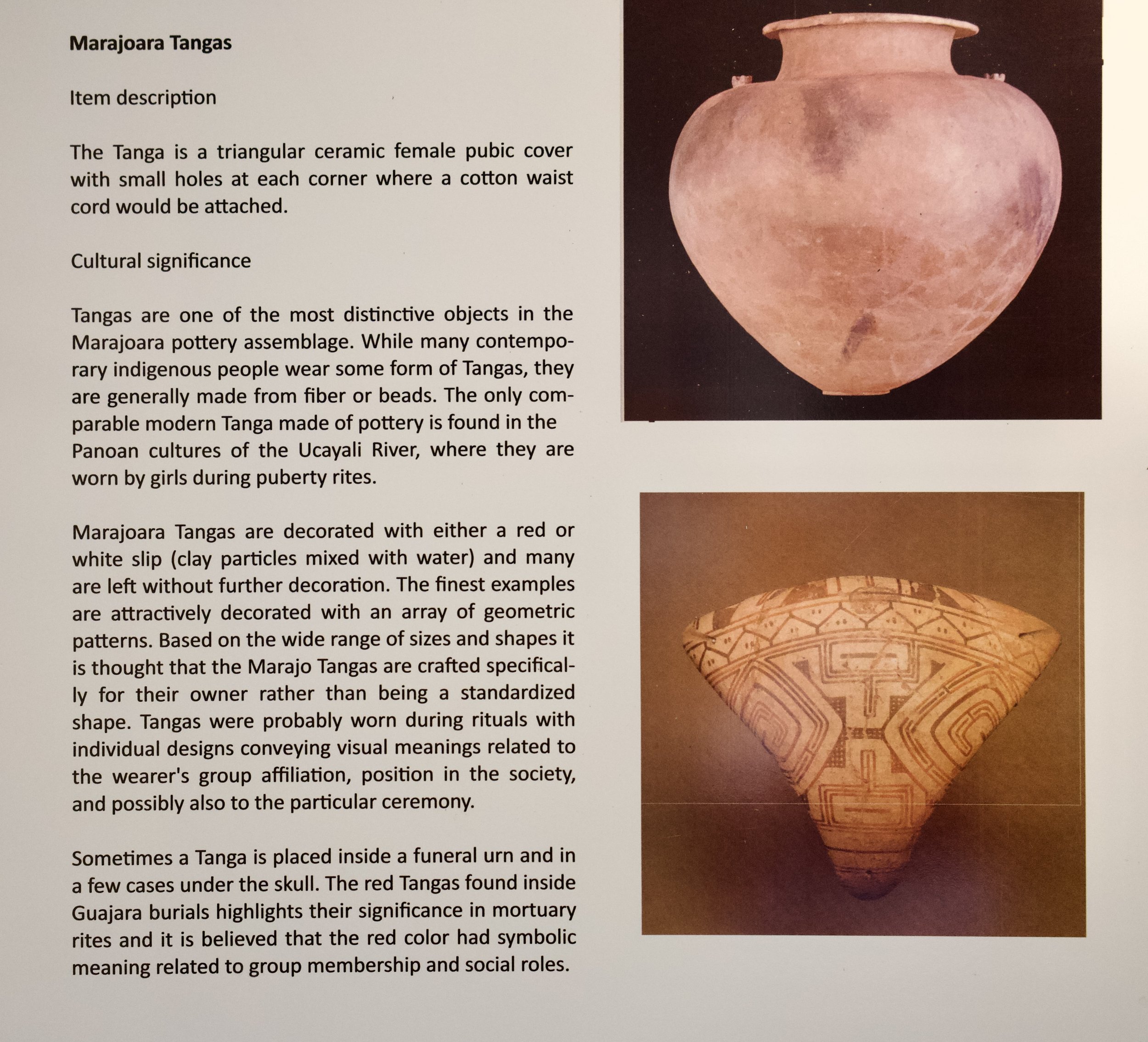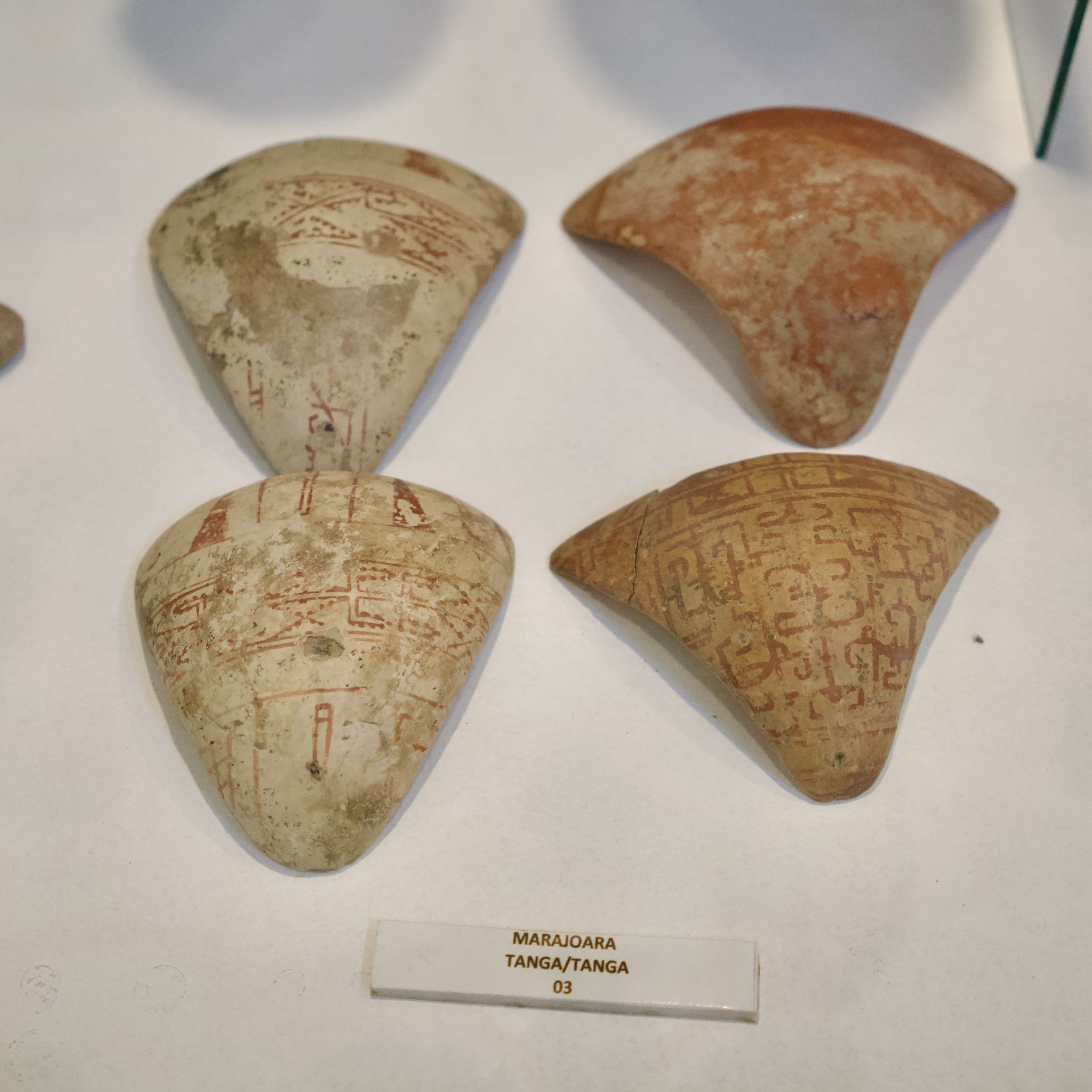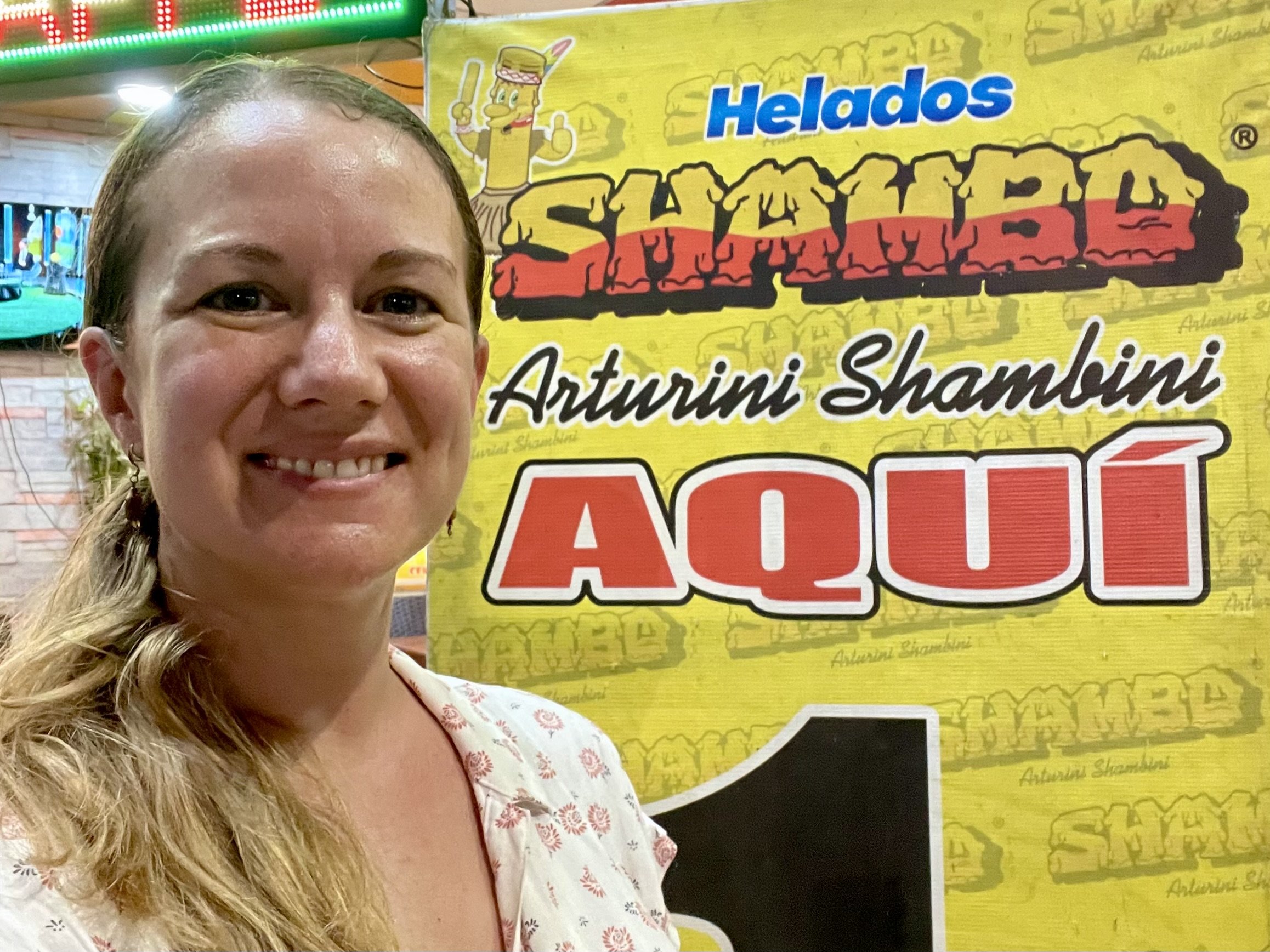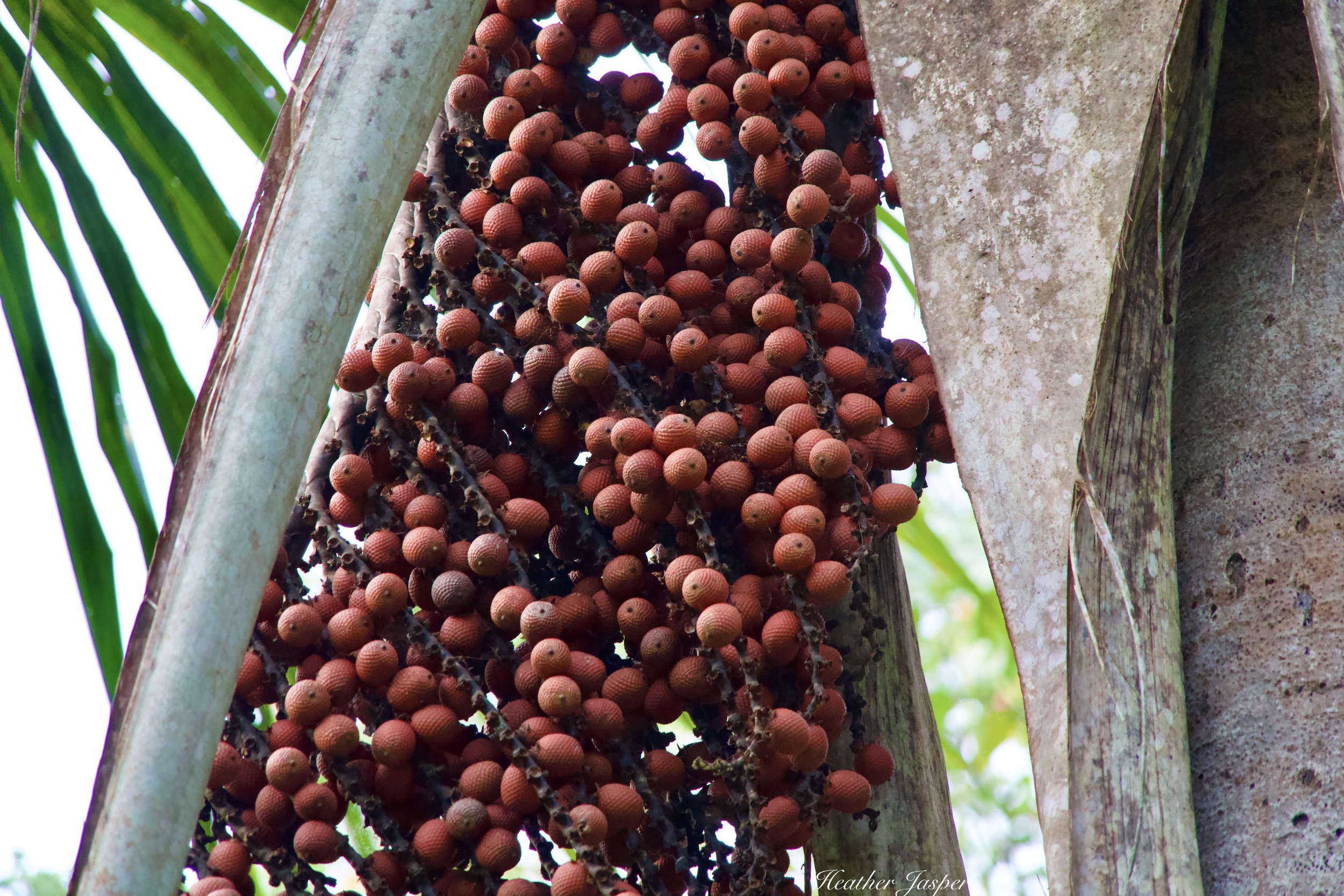Iquitos Amazon Rainforest
Everything comes from the river: food, transportation and more people coming to stake a claim on the rainforest.
I was walking through the forest with Julio, tasting tree sap that’s used to make chicle, fruits like macambo with seeds that look like snake brains and learning which tomato relatives are poisonous and which are food.
He had just heard a trogon and I was looking up into the trees, trying to find the bird, when I heard the first shot. I froze and looked sideways at Julio, my eyes wide. The trogon went silent.
“Was that a gun?” I asked.
“Yes,” he said simply, with a shrug.
“Is it somebody hunting?”
I got another shrug in reply.
I burned with the injustice of it all. We were at the Allpahuayo-Mishana National Reserve, only 25km/15.5miles south of Iquitos. This was protected land, used for scientific research and yet there was no defense against poachers. Since the road from Iquitos to Nauta was completed in 2017, it is impossible to defend all the borders of the reserve.
I looked at Julio’s machete, almost wishing we had a gun. Not that I would have been brave enough, or dumb enough, to set off through the forest looking for an armed poacher.
There was nothing we could do.
My stomach clenched as I heard another shot.
What had they killed? Or injured? Or frightened? In an area that was supposed to be protected, where animals were supposed to be protected.
It would take an army to defend even this little slice of the Amazon.
People burn land before planting. You can tell this land has been burned previously because the trees are already gone.
We all know that the Amazon is critical to providing oxygen and to removing carbon from the atmosphere, but the problems are so widespread that they feel overwhelming. I went to Iquitos to see some of the problems firsthand, and to see what people who live in the Amazon are doing about them.
Iquitos is the least Peruvian place I’ve ever been in Peru.
It’s an island, surrounded by rainforest and only accessible by boat or plane. Walking around town, I felt like I was in Malaysia, not Peru. There was something about the place that felt more like Asia than South America. That’s not because it’s rainforest. I’ve been to the rainforest in other parts of Peru and that still felt like Peru. Iquitos is different.
From clothes and food to transportation and wildlife, Peru’s northern Loreto province has more in common with the island of Borneo than with the rest of Peru.
I came to Iquitos to meet researchers who work at IIAP, the Instituto de Investigaciones de la Amazonía Peruana. I came to interview biologists and others about what exactly they’re doing in the Peruvian Amazon. I want to know what they’re studying and what they’re learning. Most importantly, I wanted to learn about deforestation in the area and what is being done to protect Peru’s part of the Amazon.
I interviewed researchers, who have fascinating stories I’m pitching to magazines right now. I’ll update this blog with links to those stories when they’re published.
After the interviews, I was invited to go to Allpahuayo and see where they do most of their research. A big group of researchers had just left and they said I could stay as long as I wanted. I had a couple days left on my trip, which had otherwise been a disaster because it was so hot I didn’t do any of the other things I had planned. I didn’t go to the animal rescue center. I didn’t even go see the Amazon River, which is right by town.
It was 42C/108F every day, with very high humidity.
I’ll admit that all I wanted was to go home to Cusco. One day I resolved to go to the animal rescue center, and instead I went to the movies to sit in the air conditioning. The next day, instead of going to see the rescued animals, I went to a museum.
I’ve seen artifacts from Amazonian tribes in museums before, in Europe, North America and in Brazil. The museum in Iquitos felt very different because I’ve met people who still use these things and still dress in the clothes on display. It felt much less like a museum and more like I’d broken into somebody’s house and was going through their stuff.
The notable exception to feeling like I was wandering around, looking through somebody’s closet and kitchen was the ceramic tangas above. I do not know anybody who wears a tanga though I’m a bit curious to try one on.
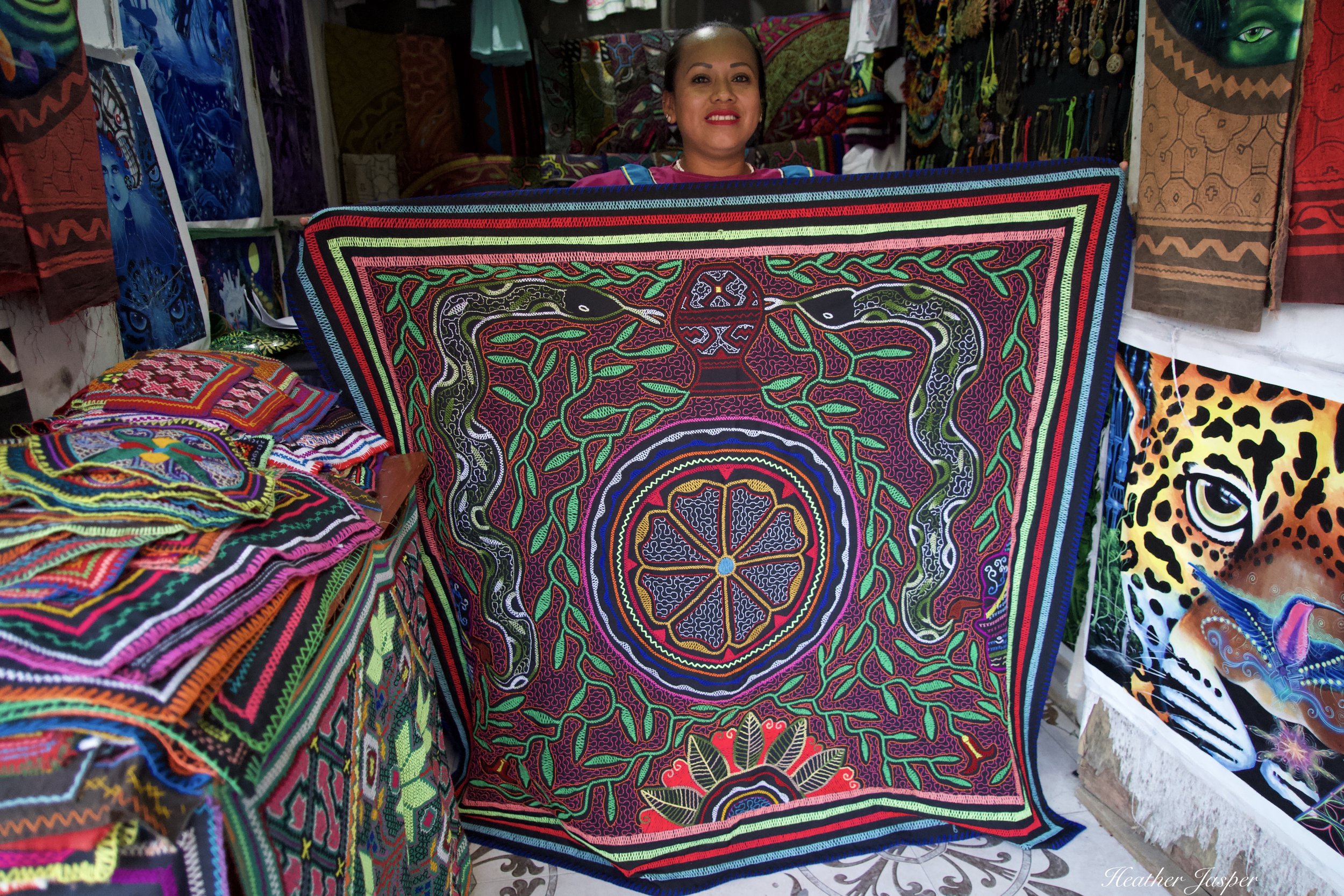
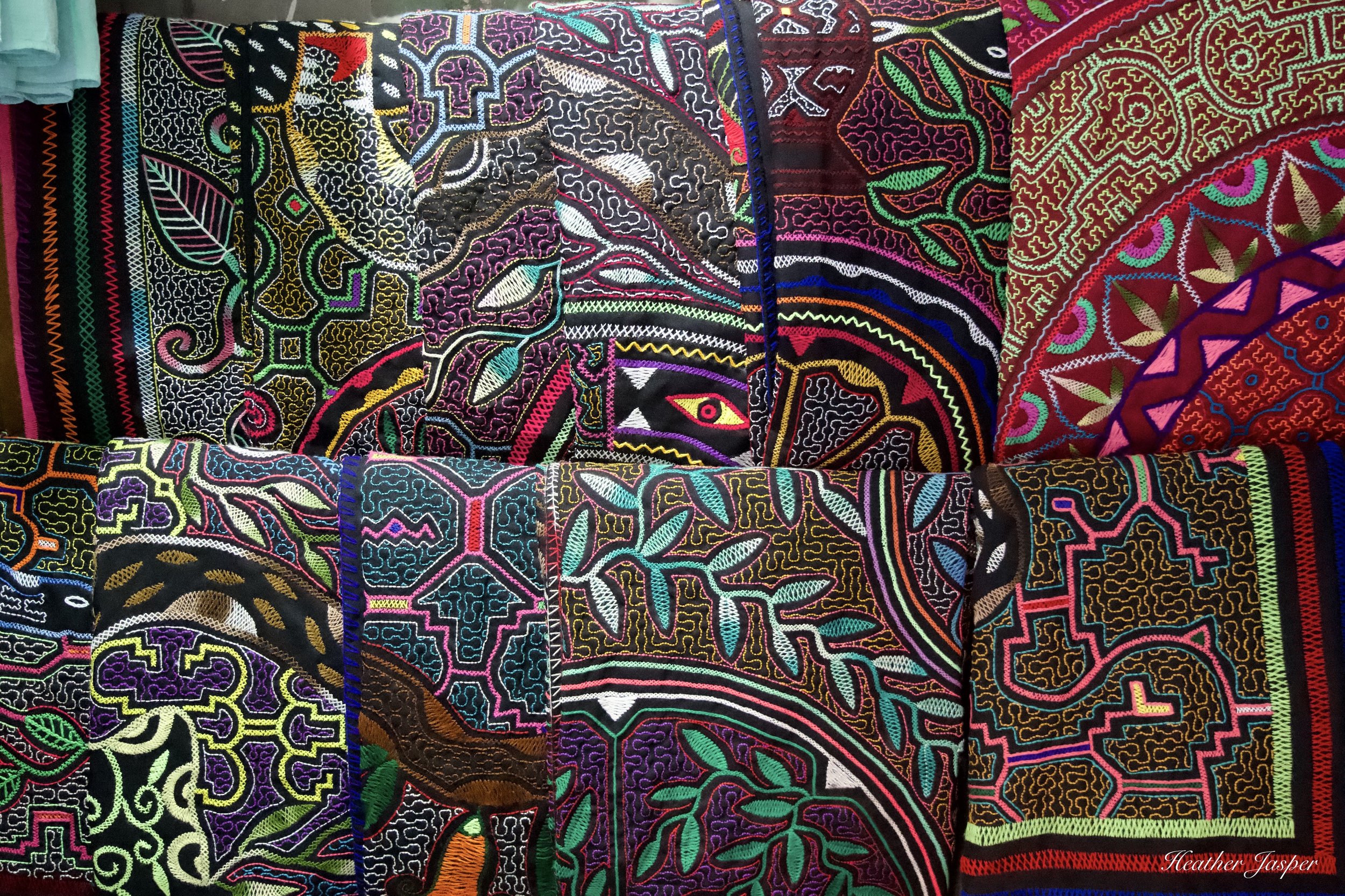
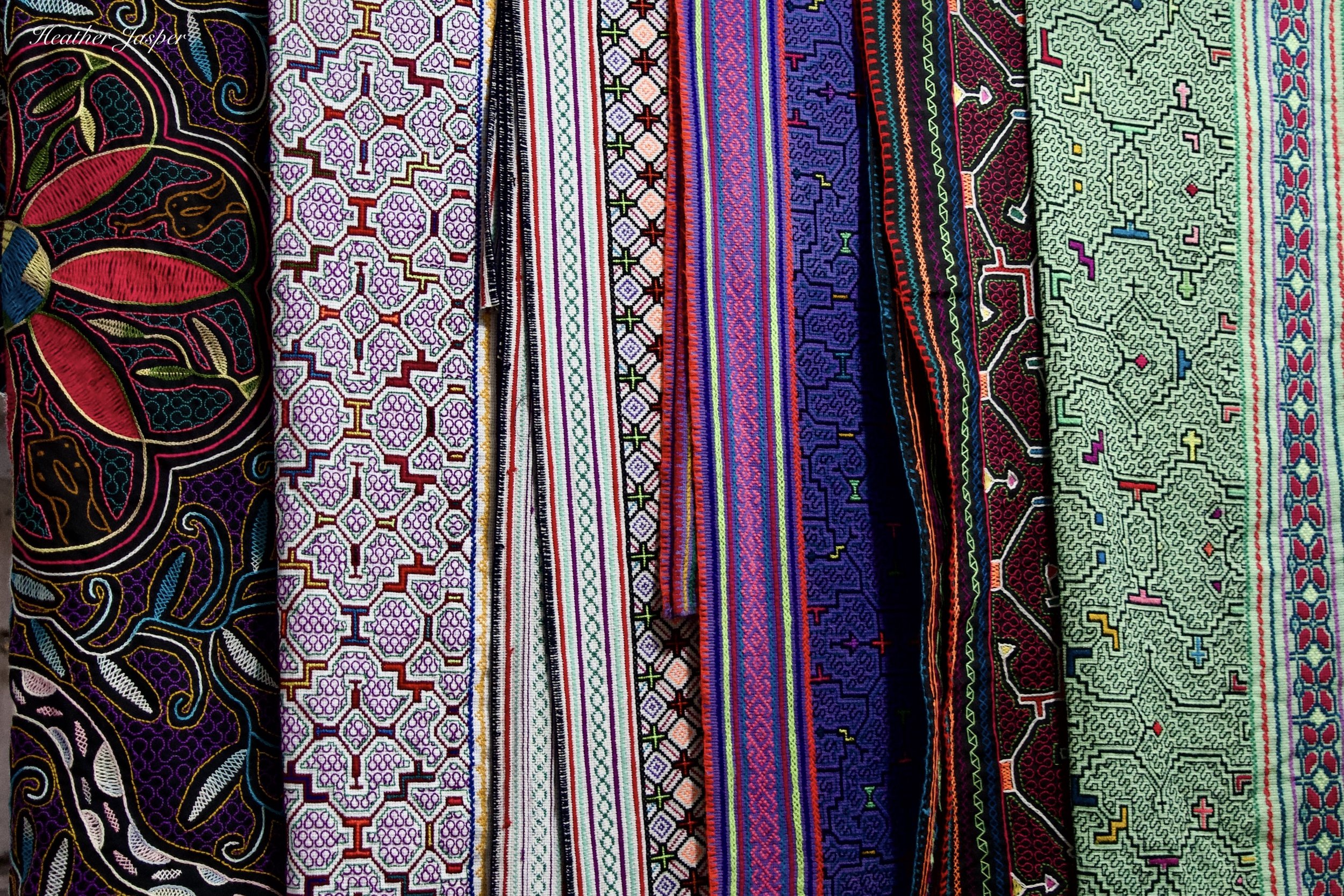
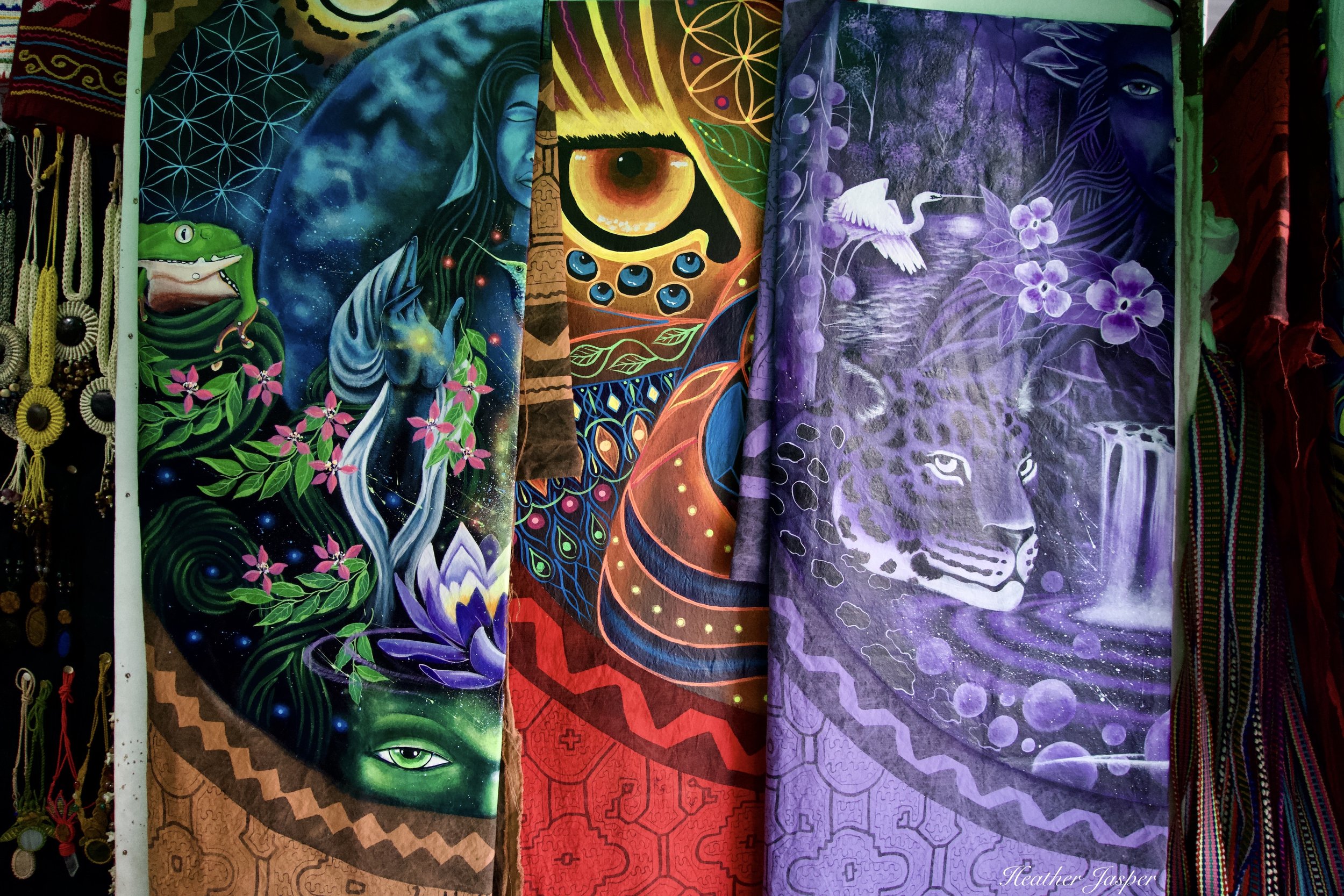
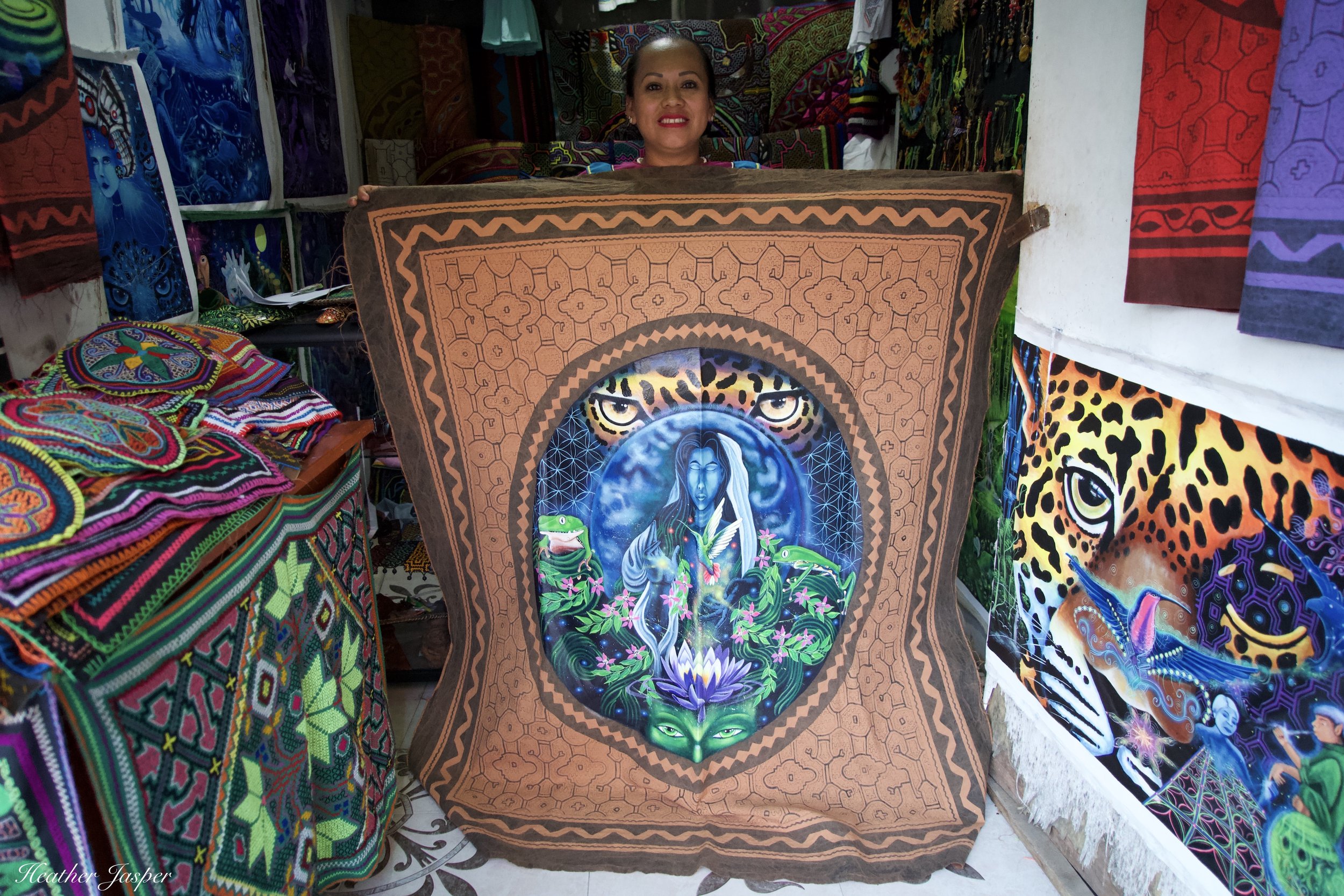
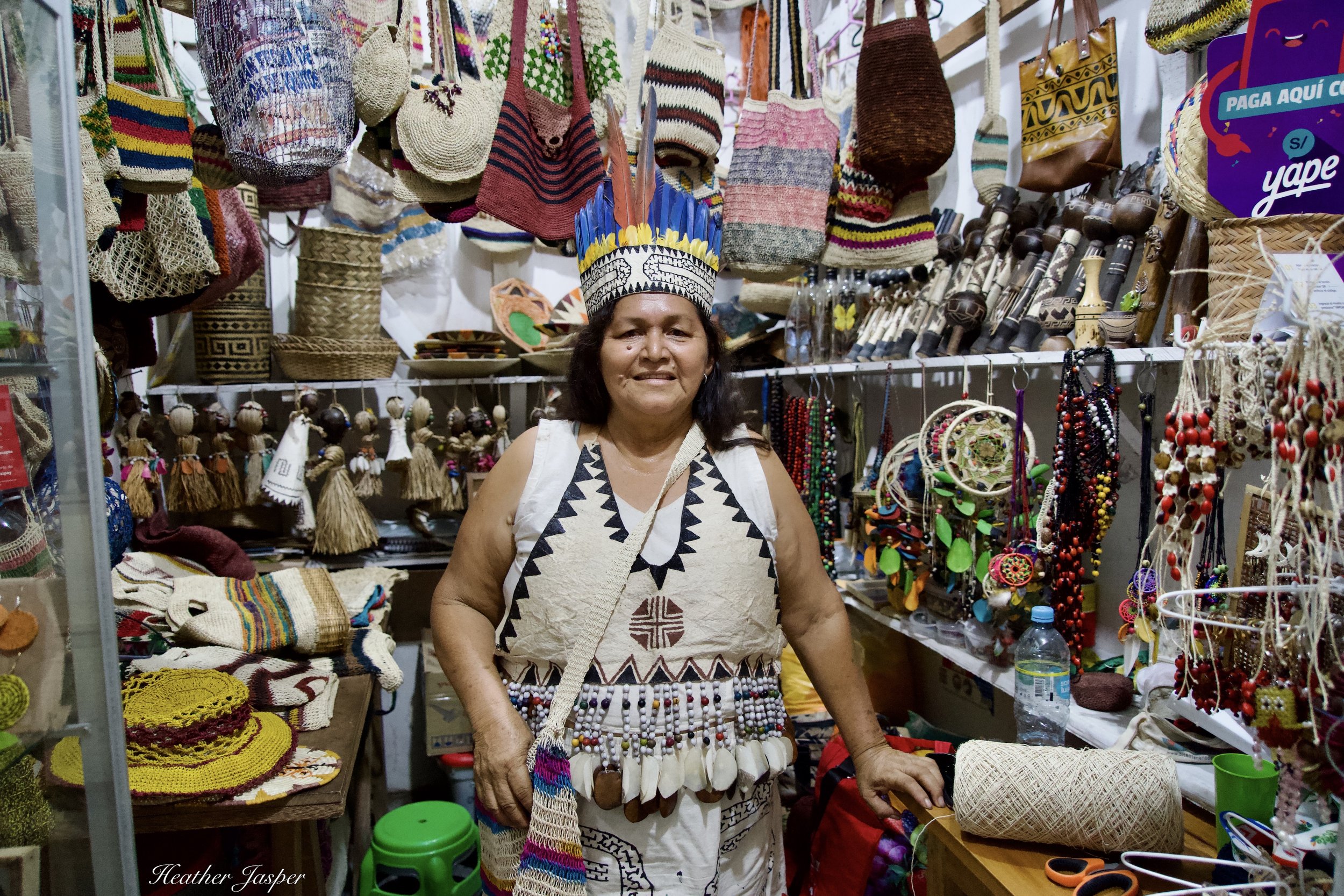
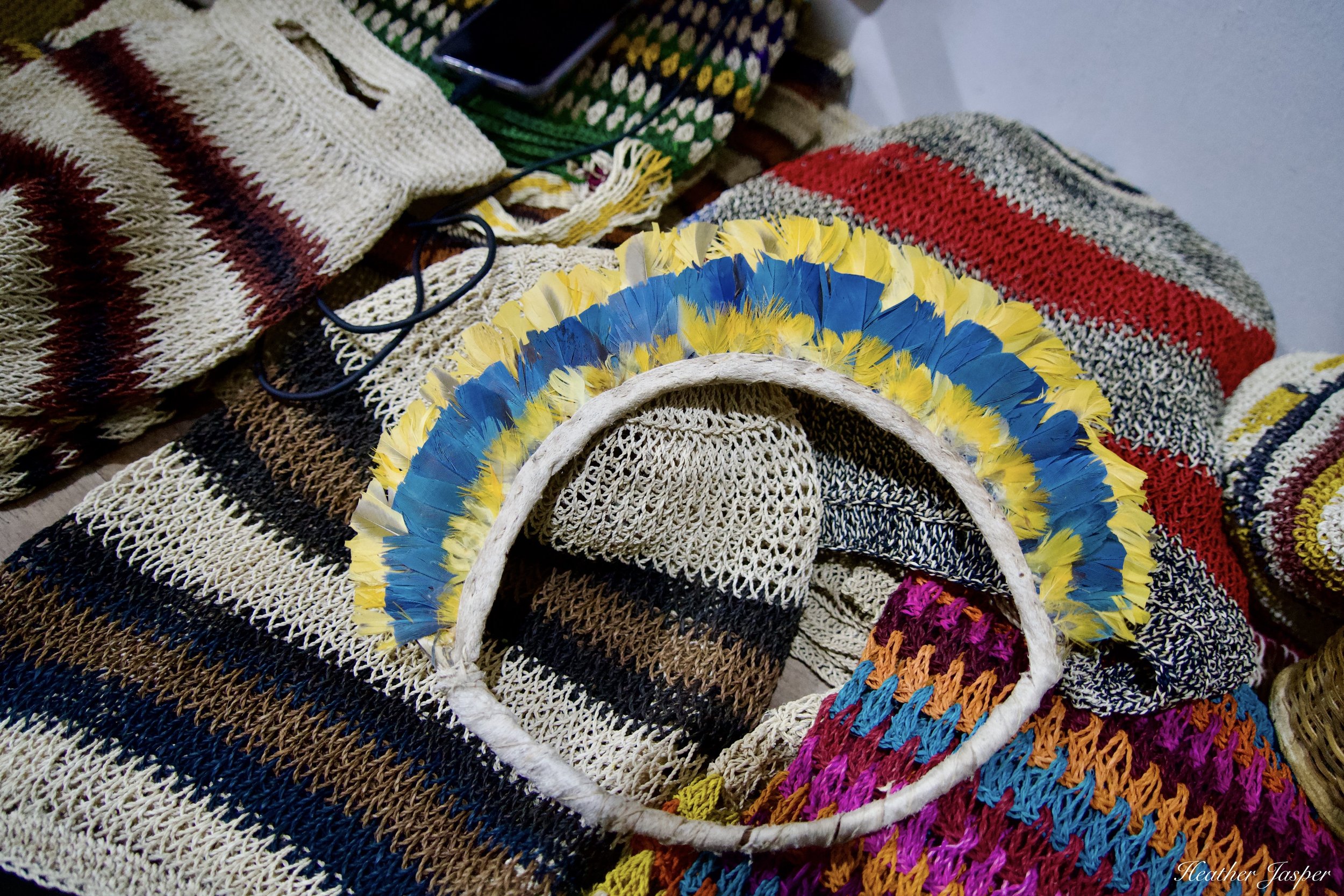
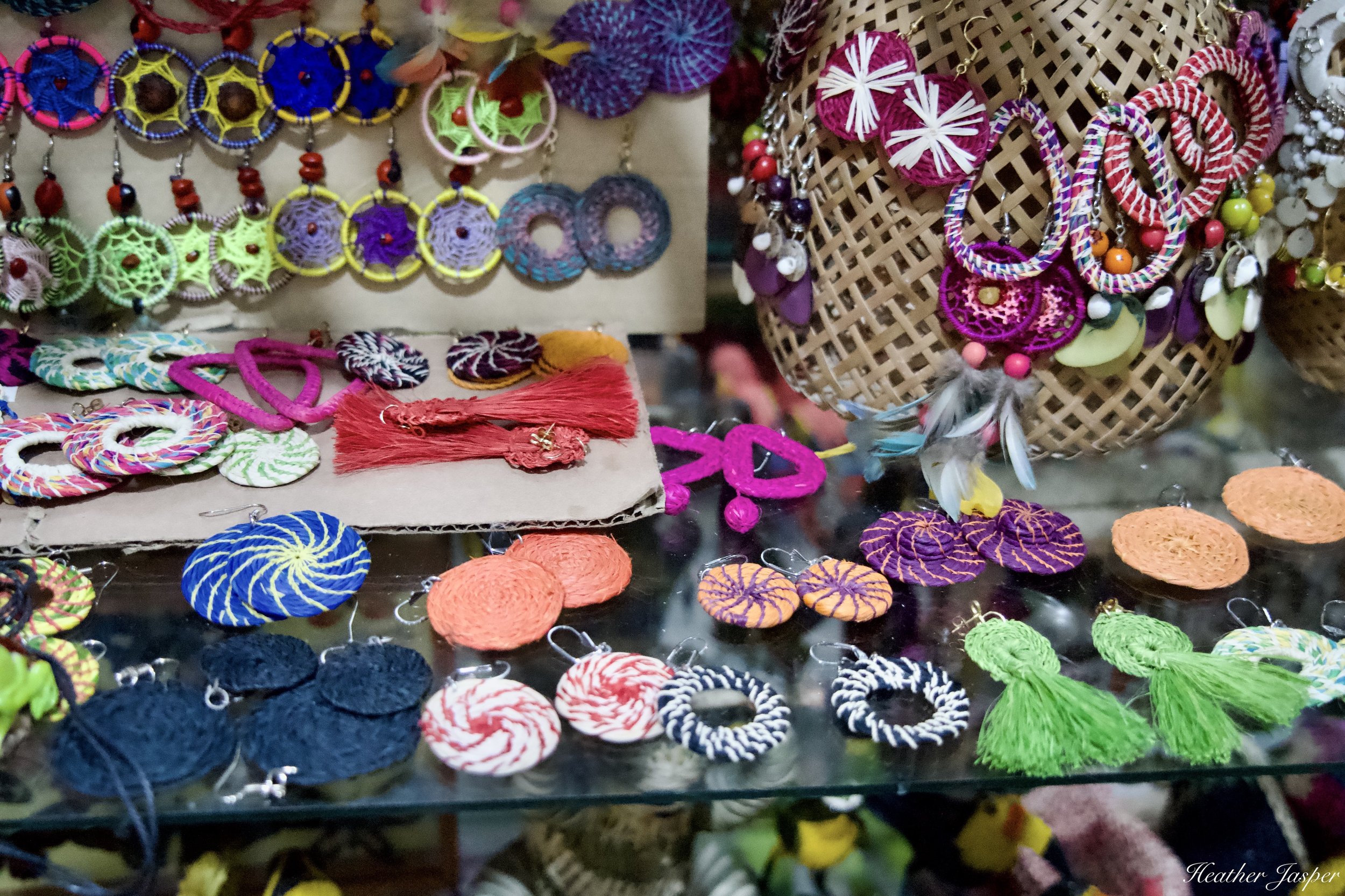
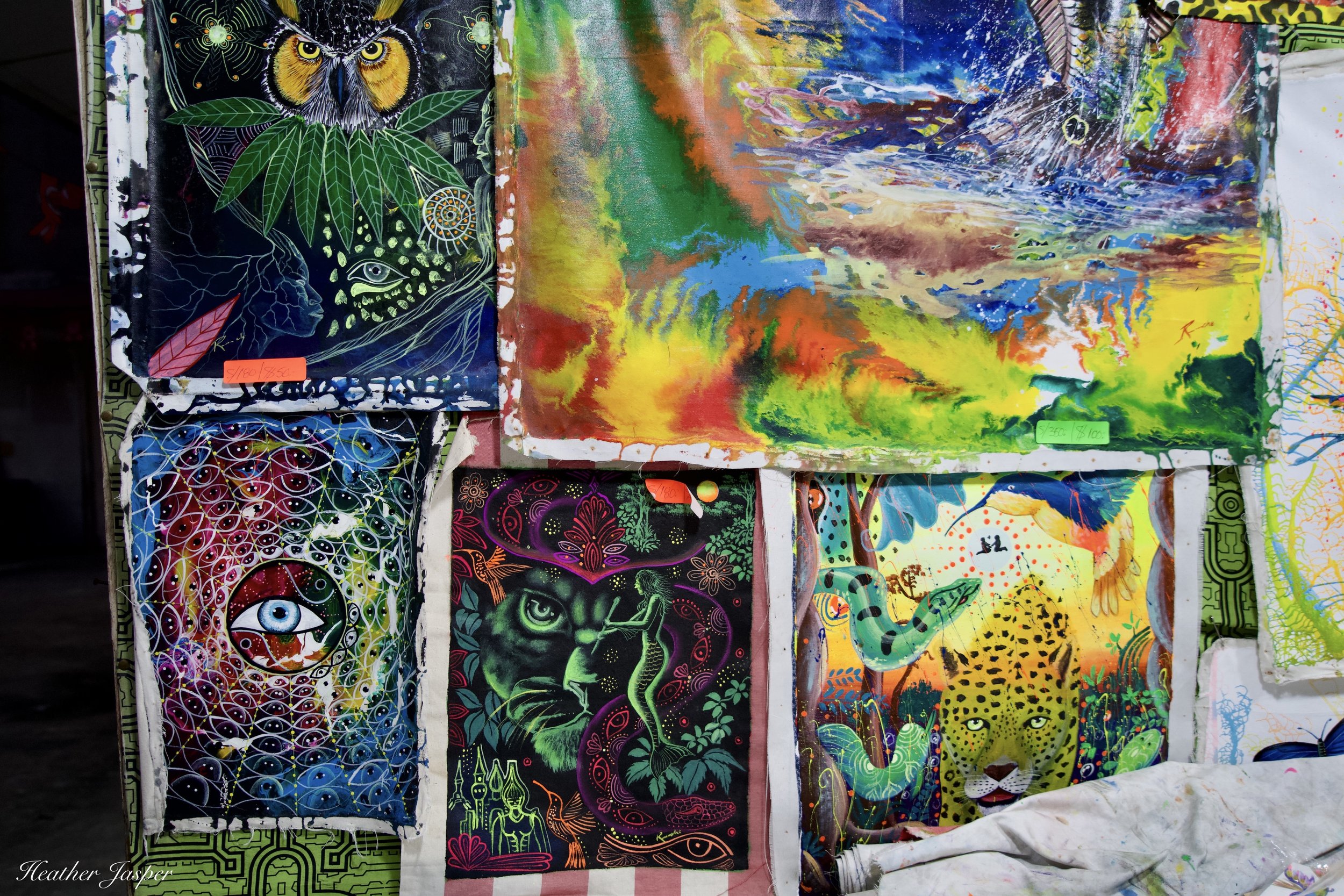
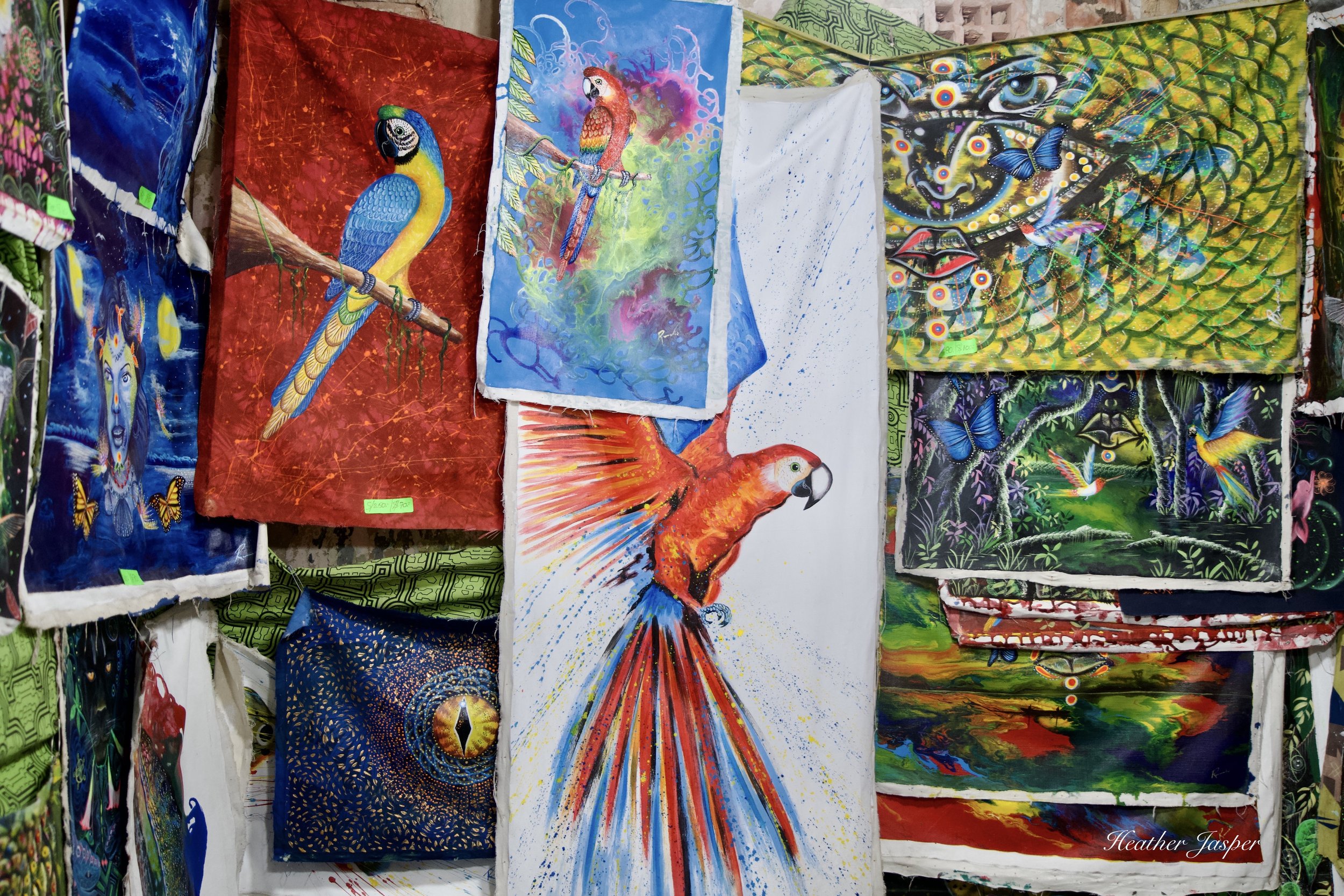
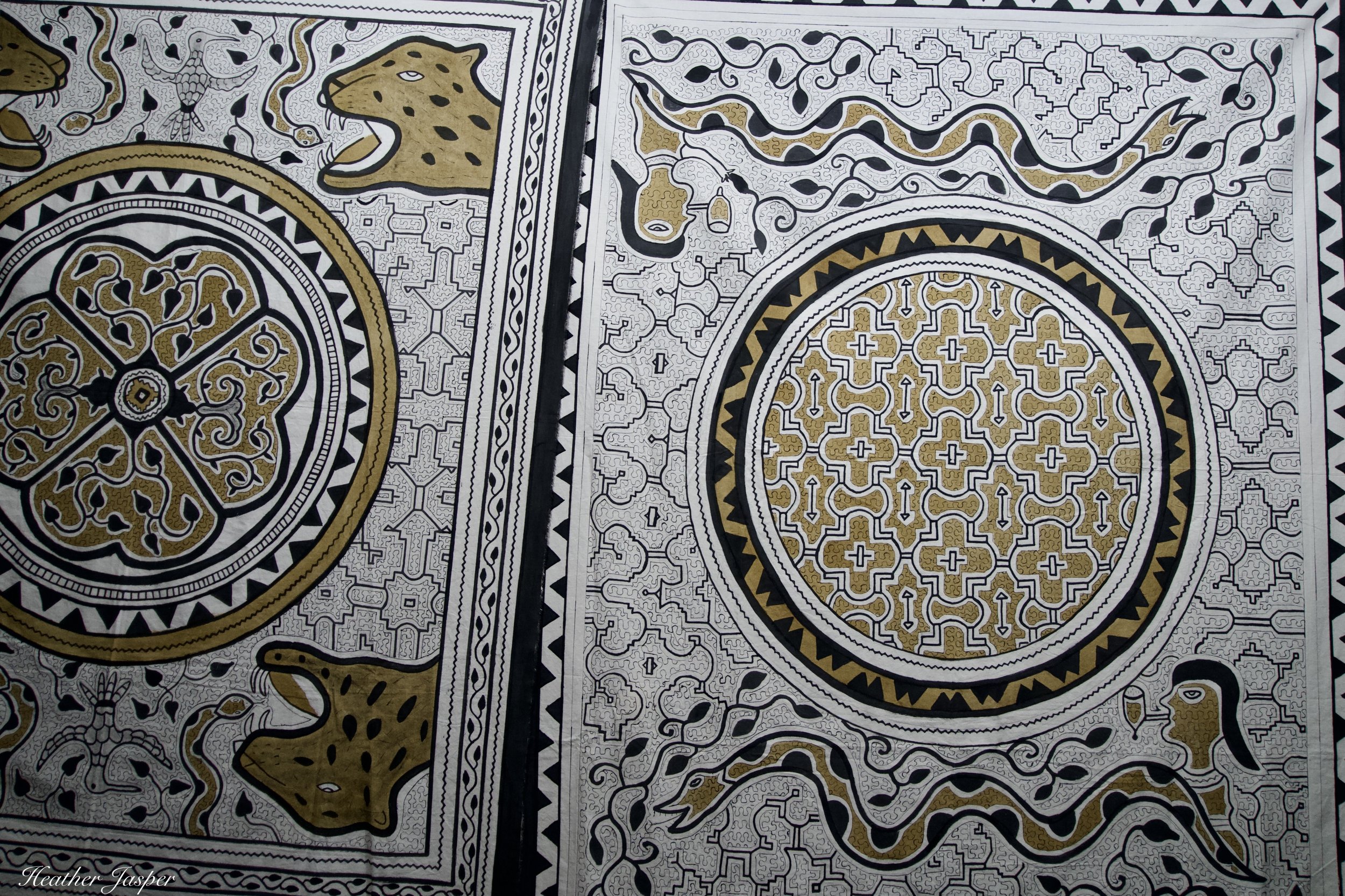
One of the best things to do in Iquitos, Peru is the Shipibo market.
One touristy thing I did that I highly recommend is the Shipibo market. There are a couple dozen stalls in the market, each one selling different kinds of art. At each stall, I spoke with the artist who was selling what they and their family made. This was not the usual market where each stall has roughly the same stuff because they all buy from the same people. (I know several markets like that in Cusco).
The Shipibo market was different because the people I met really were selling what they make. It was refreshing and much more interesting than most markets. It’s currently on the main plaza though the association president told me that they’re fighting eviction. The city wants to build something on the land and move them a few blocks away, which would surely decrease the number of people who visit significantly.
One of women in the photos above is Rosita, who sells her embroidery and her husband’s paintings. She is the president of the artists’ association who explained about their potential eviction to another location farther from the plaza. Ceci is the other woman, who showed me all of the things that she makes from palm fibers. She explained how she picks the softest fibers, how she dyes them with natural colors, how she then twists them into string and how she uses that string for weaving all kinds of things.
What to eat in Iquitos?
The best restaurant in Iquitos is Blanquita.
Blanquita is only open for dinner and I suggest getting there early. Once they’re out of something, you’ll have to wait for the next day. They’re famous for traditional dishes like juane and patarashca.
Juane is a combination of rice and some kind of meat wrapped in bijao leaves and steamed. When it’s unwrapped, it sticks together in one big ball. The rice is greenish from the spices mixed in before it’s cooked.
Patarashca is a whole fish wrapped in bijao leaves and cooked over a grill. I didn’t realize that it was always a whole fish. When I went to Blanquita, I ordered patarashca and was given a choice of three Amazonian fish. The waitress told me that paparati had the fewest bones, so I ordered that. I was a little horrified when she came back with a whole fish on a platter. It was way too much for one person.
It was also the best cooked fish I’ve ever had.
I say cooked because I’ve had better sushi and better smoked salmon, but never have I tasted cooked fish that good.
The paparati had chopped tomatoes and onions cooked with some kind of herbs inside the bijao leaves. Bijao leaves are a wide, flat leaf, kind of like small banana leaves. Bananas are native to Asia but bijao are native to the Amazon. Except for the onions, everything is native to the Americas.
Aguaje fruit grow in giant bunches on the aguaje palm.
Aguaje is so popular that by one estimate the city of Iquitos consumes about 20 tons per day. That comes out to about a pound per person. Considering how much aguaje juice, ice cream and popsicles people eat every day, that seems entirely possible to me. I’m pretty sure I ate that much, since I had both popsicles and ice cream every day.
The fruit has red scales that look like dragon scales to me, but the fruit inside is a pale orange. It is very hard to get the scales off to get at the fruit because they’re hard and they stick to the fruit. Each aguaje has only a thin layer of fruit on a large woody pit. It’s pretty dry by itself, but mixed with water and sugar, it’s delicious.
Shambo is the most popular local brand of aguaje ice cream and popsicles. They’re for sale everywhere, from street corners to Shambo ice cream shops all around town.
Cocona is a yellow fruit in the tomato family.
I had more cocona juice than aguaje juice because it was more refreshing and with temperatures around 42C/108F every day I was desperate for anything that could cool me down a bit. When I was staying at the Allpahuayo-Mishana reserve, Julio picked some cocona from the research center’s garden and made a salad with it. He peeled off the dark yellow skin, which is like a very thick tomato peel, and chopped the fruit with cucumber, serving it with only a little vinegar for dressing.
Always get travel insurance
If you’re coming to Peru, and especially if you’re going to venture into the rainforest, you need travel insurance. I use SafetyWing and if you buy SafetyWing insurance with my link, I may get a small commission at no extra cost to you. This is a great way to both protect yourself when traveling in Peru and also support my website and all the free blogs I write for you!

